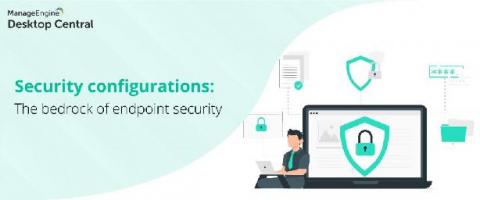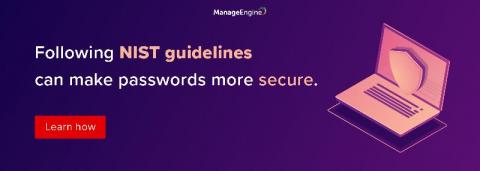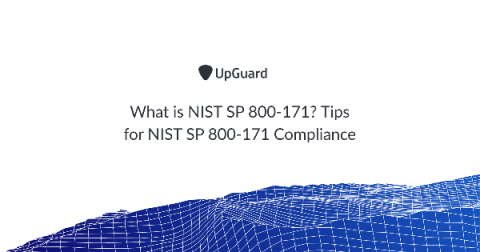Security | Threat Detection | Cyberattacks | DevSecOps | Compliance
NIST
Risk Assessment Checklist NIST 800-171
The National Institute of Standards and Technology (NIST) Special Publication (SP) 800-171 is a subset of IT security controls derived from NIST SP 800-53. NIST SP 800-53 provides a catalog of cybersecurity and privacy controls for all U.S. federal information systems except those related to national security. The IT security controls in the “NIST SP 800-171 Rev.
Security configurations-Part one: 7 reasons why security configurations are crucial to your security blueprint
Security configurations are security-specific settings used to secure heterogeneous endpoints such as servers, desktops, laptops, mobile devices, and tablets. As endpoints in your network diversify, securing each endpoint becomes a challenge. One way to ensure effective endpoint security is by automating it, which is where security configurations come into play. Security configurations are utilized to secure and control every facet of your network.
What is NIST Special Publication 800-37 Revision 2?
National Institute of Standards and Technology (NIST) Special Publication (SP) 800-37 revision 2 is a Risk Management Framework for Information Systems and Organizations: A System Lifecycle Approach for Security and Privacy. NIST SP 800-37 rev 2 was published in December of 2018 and describes the Risk Management Framework (RMF) and guidelines on how to apply RMF to information systems.
Now Is the Time to Get up to Speed with CMMC and SP 800-171 Rev 2
At the beginning of March 2020, Fifth Domain reported that Colorado-based aerospace, automotive and industrial parts manufacturer Visser Precision LLC had suffered a DoppelPaymer ransomware infection. Those behind this attack ultimately published information stolen from some of Visser’s customers. Those organizations included defense contractors Lockheed Martin, General Dynamics, Boeing and SpaceX.
All you need to know about NIST password guidelines
The National Institute of Standards and Technology (NIST), a physical sciences laboratory and a non-regulatory agency of the United States Department of Commerce, recently released their guidelines for password security. Some of them are contrary to what we’ve come to believe are good password policies. Our IT security expert will talk more about these guidelines in our upcoming webinar. Let’s take a look at what some of them are.
How to Leverage NIST Cybersecurity Framework for Data Integrity
Together with the National Cybersecurity Center of Excellence (NCCoE), the National Institute of Standards and Technology (NIST) has released a series of practice guides that focuses on data integrity: the property that data has not been altered in an unauthorized manner. Tripwire is very proud to have contributed and collaborated with other technology vendors in the development of these practice guides.
The War of Passwords: Compliance vs NIST
The most recent National Institute of Standards and Technology (NIST) guidelines have been updated for passwords in section 800-63B. The document no longer recommends combinations of capital letters, lower case letters, numbers and special characters. Yet most companies and systems still mandate these complexity requirements for passwords. What gives?
Privileged Password Policy Compliance Overview: NIST 800-63, HIPAA, PCI DSS, GDPR
Privileged passwords should be used wisely. These credentials, also called secrets, provide a user with access to protected accounts, systems, networking hardware, cloud instances, and applications. Since privileged accounts also have elevated permissions, passwords to these accounts are often targeted by cybercriminals. In fact, weak, reused, and compromised passwords are the cause of 81% of all data breaches according to the Verizon 2019 Data Breach Investigations Report.
What is NIST SP 800-171? Tips for NIST SP 800-171 Compliance
NIST Special Publication 800-171, Protecting Controlled Unclassified Information in Nonfederal Systems and Organizations (NIST SP 800-171 or NIST 800-171), provides federal agencies with a set of guidelines designed to ensure that Controlled Unclassified Information (CUI) remains confidential and unchanged in nonfederal systems and organizations.








